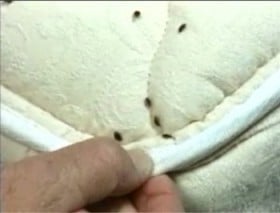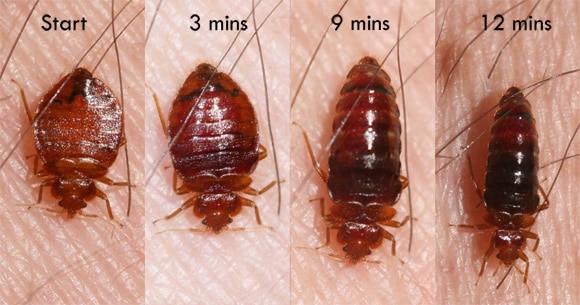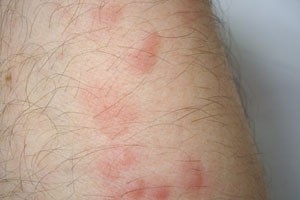Bed Bug Inspection – How Do I Check For Bed Bugs In My Home?
 You need to first know what bed bugs look like, and the clues they leave to their presence, before you can accurately inspect your home for bed bugs, so let us first go through what you should be looking for.
You need to first know what bed bugs look like, and the clues they leave to their presence, before you can accurately inspect your home for bed bugs, so let us first go through what you should be looking for.
Adult bed bugs are visible to the naked eye and can grow to about ¼ of an inch and only take about four weeks to get to that size.
Babies are not visible to the naked eye and are transparent until they have their first blood meal. If you suspect that any bed bugs have entered your home, you may need a magnifying glass to spot the young bed bugs.
Once the infestation takes over you will have no trouble identifying the reddish-brown adults. They are oval and have a flat body, laying 2-5 bed bug eggs per day to the tune of up to 500 eggs per female insect.
Bed bugs are difficult to spot during the day because they are able to hide very well between the seams in your mattress or on the couch, and many other nooks and crannies around your home.
Since bed bugs suck your blood at night and most people sleep right through once the bed bugs start feeding, you may not realize you have an infestation until there are hundreds or thousands of bed bugs everywhere around your room and home.

How Can You Tell You Have Bed Bugs?

The first clue that you have a bed bug problem at home, are the bites which usually happen first on exposed skin like your arms, face, and neck because of their proximity to your mattress seams.
Once the infestation takes place, you may notice a musty and disagreeable odor wafting around your room which means that their numbers have grown.
It’s far easier and less expensive to get your bed bug problem under control in the early stages. As your bed bug infestation level continues to rise, the cost to professionally get them exterminated rises as well.
A second hint of a nasty bed bug infestation is finding an adult bed bug, which is probably already laying eggs, which means that a professional bed bug heat treatment might already be necessary.
The third surefire sign of a bed bug infestation at home are the eggs and fecal matter found near the nests, around the crevices, and the cracks in mattresses or any couch that you and your family use to rest or sleep. They can also be found on any furniture and appliances, on the floor or on ceilings.
Bed frames and headboards are also susceptible places where these insects hide. Bed bugs are masters at hiding during the day! Using a flashlight at night and searching the seams to spot the amber-colored bugs might be your best chance at catching them early, before far more drastic measures are needed.
Bed Bugs Can Hide Anywhere – Don’t Forget To Look Here, Too!
In reality, there is a myriad places at home where bed bugs might hide, such as, behind baseboards, around window sills and frames, under your nightstands and drawers, between upholstered furniture, around pipes, creases, tufts of your very own mattress or box spring, behind switch plates, inside loose wallpaper, inside alarm clocks, around windows and door casings, headboards and where materials meet to form a gap, just to name a few. (We can also help with Bed Bug Furniture Removal & Mattress Disposal)
Make sure you look everywhere or call a licensed bed bug expert for an in-home bed bug inspection. If you suspect bed bugs have invaded your residence, call Phoenix Bed Bug Expert for a bed bug inspection now at 623-202-7924.